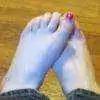-
Welcome to Celiac.com!
You have found your celiac tribe! Join us and ask questions in our forum, share your story, and connect with others.
-
Celiac.com Sponsor (A1):
Celiac.com Sponsor (A1-M):
-
Get Celiac.com Updates:Support Our Content
Sponge Question
-
Get Celiac.com Updates:Support Celiac.com:
-
Celiac.com Sponsor (A17):
Celiac.com Sponsor (A17):
Celiac.com Sponsors (A17-M):
-
Recent Activity
-
- knitty kitty replied to Scott Adams's topic in Post Diagnosis, Recovery & Treatment of Celiac Disease44
Supplements for those Diagnosed with Celiac Disease
@Scatterbrain, Thiamine Vitamin B1 and amino acid Taurine work together. Our bodies can make Taurine from meats consumed. Our bodies cannot make Thiamine and must consume thiamine from food. Meat is the best source of B vitamins like Thiamine. Vegetarians may not make sufficient taurine since they don't eat meat sources of taurine... -
- knitty kitty replied to Jmartes71's topic in Related Issues & Disorders19
My only proof
@Jmartes71, I went to Doterra's site and had a look around. The Doterra TerraZyme supplement really jumped out at me. Since we, as Celiacs, often have digestive problems, I looked at the ingredients. The majority of the enzymes in this supplement are made using black mold, Aspergillus! Other enzymes are made by yeast Saccharomyces! Considering... -
- Scott Adams commented on Scott Adams's article in Additional Concerns2
Gluten Transfer from Biodegradable Tableware: What a New Study Found and Why It Matters (+Video)
Thanks for mentioning this, and here is an older article on the topic:- biodegradable
- celiac disease
- (and 8 more)
-
- Scott Adams commented on Scott Adams's article in Gluten-Free Grains and Flours18
Cricket Flour Makes Really Good Gluten-Free Bread
Your concern about certified gluten-free cricket powder is completely valid, as cross-contamination in both feedstock and processing is a real issue. Currently, the availability of certified gluten-free options is limited, but brands like Chapul and Entomo Farms, which I believe have offered products processed in dedicated facilities and labeled gluten-free... -
- DebJ14 commented on Scott Adams's article in Additional Concerns2
Gluten Transfer from Biodegradable Tableware: What a New Study Found and Why It Matters (+Video)
And let's not forget that we have to beware of paper straws. Those strips of paper are often glued into straws with wheat paste. I ran into this on a cruise when they stopped using plastic straws. I was sick within 30 minutes of having a Mojito. The person taking care of my food allergies pulled a box from a bar and sure enough "Contains Wheat" was written...- biodegradable
- celiac disease
- (and 8 more)
-




Recommended Posts
Archived
This topic is now archived and is closed to further replies.